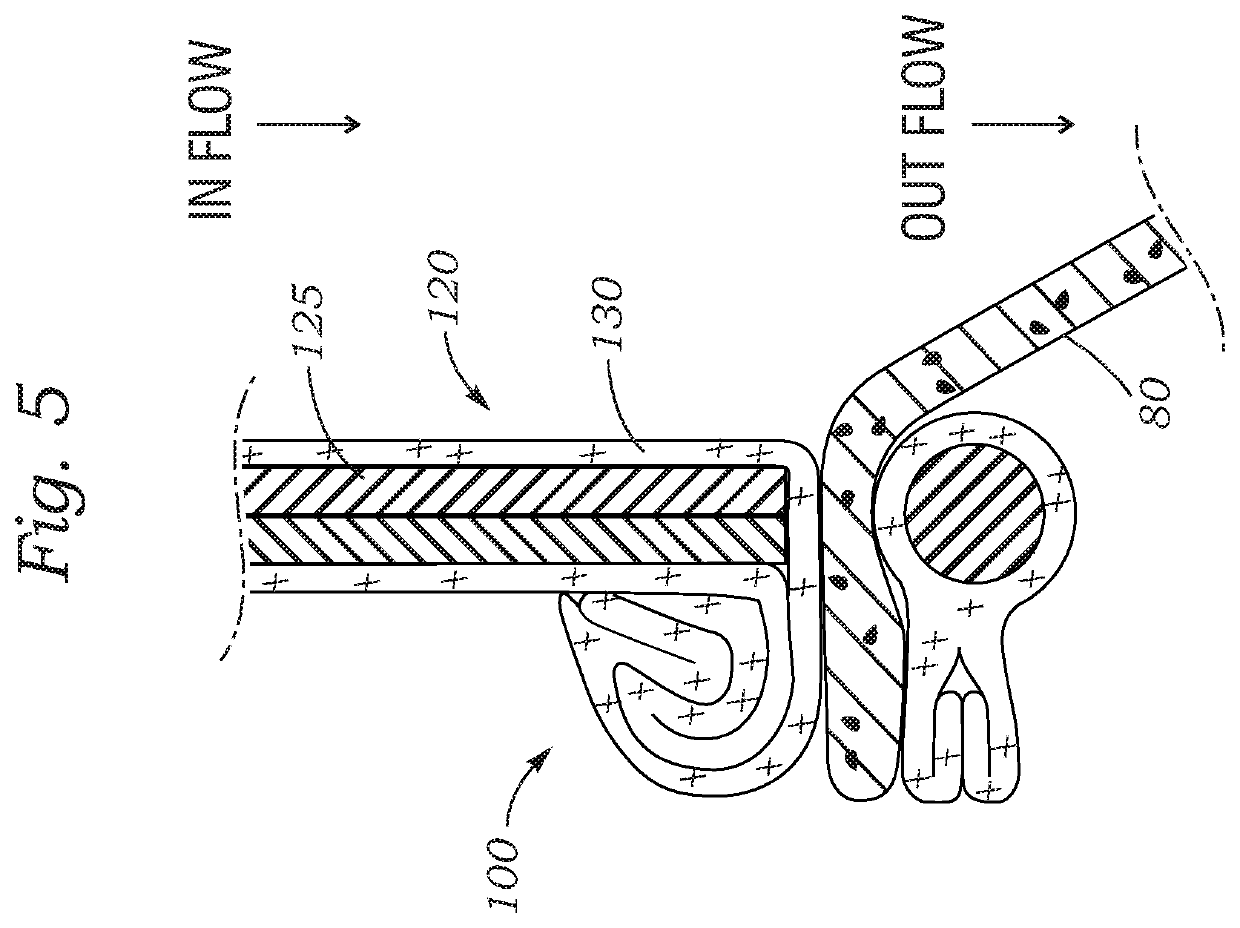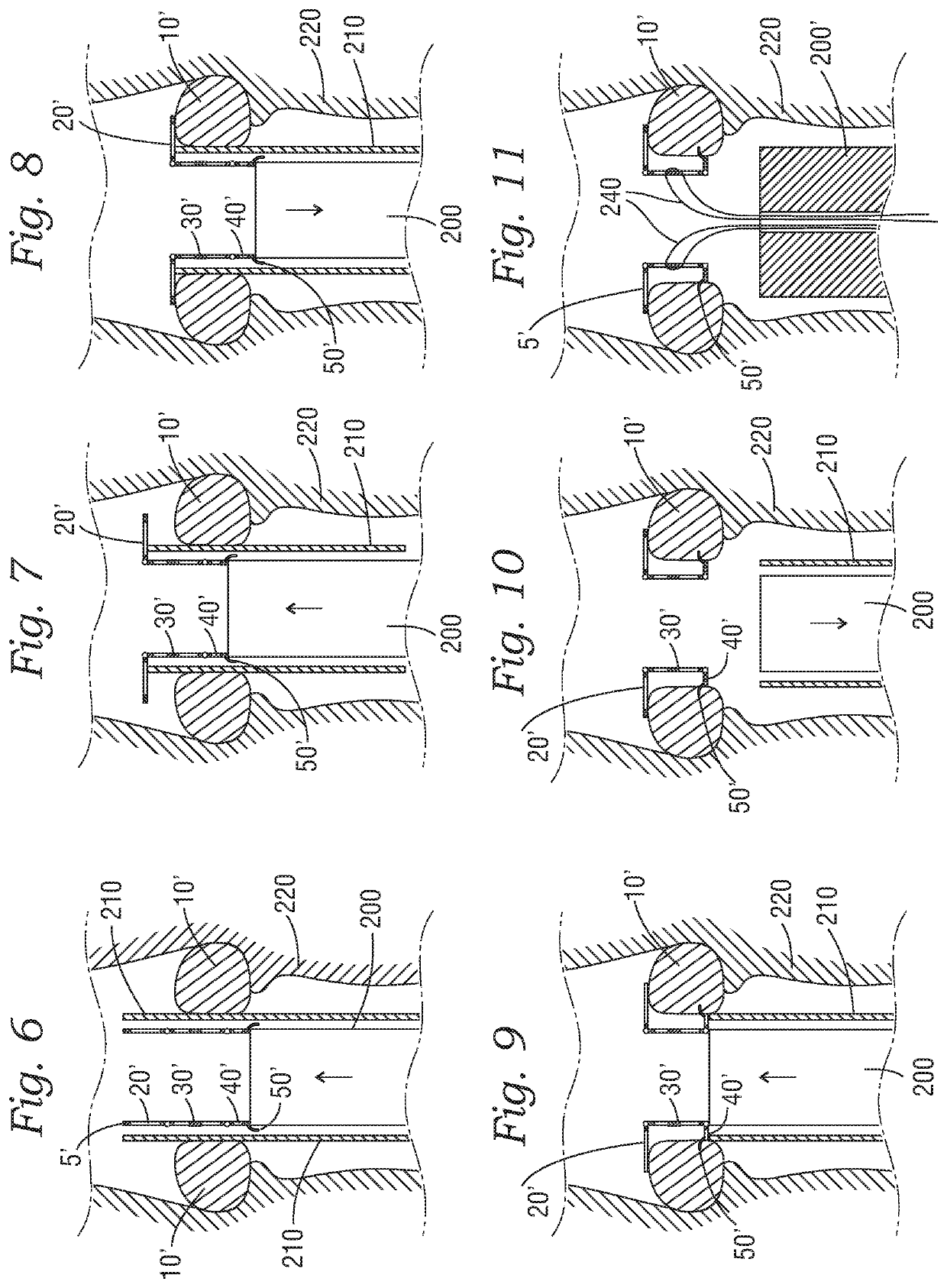Methods for securing a transcatheter valve to a bioprosthetic cardiac structure
a bioprosthetic valve and transcatheter valve technology, applied in the field of transcatheter valve implantation in a bioprosthetic valve or a native valve, can solve the problems of insufficient expansion of the transcatheter valve inside the implanted tissue valve, the size of the transcatheter valve is too small to be secured into some larger bioprosthetic valve sizes, and the patient's outlive the life of the valv
- Summary
- Abstract
- Description
- Claims
- Application Information
AI Technical Summary
Benefits of technology
Problems solved by technology
Method used
Image
Examples
Embodiment Construction
[0038]FIG. 1 illustrates one embodiment of a spacer ring 5 deployed in a surgical mitral or tricuspid prosthetic valve 10, for example, a Carpentier-Edwards PERIMOUNT Magna Mitral Ease® mitral heart valve (Model 7300TFX, Edwards Lifesciences, Irvine, Calif.). The spacer ring 5 is provided to narrow or reduce the space within an implanted bioprosthetic mitral, tricuspid, pulmonic, or aortic valve 10 into which the transcatheter valve is to be implanted, for example, a surgically implantable bioprosthetic valve. As discussed above, the spacer ring 5 is useful in situations in which an interior space or lumen of a previously implanted prosthetic valve is too large for direct implantation of a largest available transcatheter valve therein. FIG. 2 is a top view of the same spacer ring 5 in place on the surgical mitral or tricuspid valve 10. FIG. 3 is a perspective view of the spacer ring itself, and FIG. 4 is a cross-section of the spacer ring of FIG. 3.
[0039]Considering FIG. 4, the spac...
PUM
 Login to View More
Login to View More Abstract
Description
Claims
Application Information
 Login to View More
Login to View More - R&D Engineer
- R&D Manager
- IP Professional
- Industry Leading Data Capabilities
- Powerful AI technology
- Patent DNA Extraction
Browse by: Latest US Patents, China's latest patents, Technical Efficacy Thesaurus, Application Domain, Technology Topic, Popular Technical Reports.
© 2024 PatSnap. All rights reserved.Legal|Privacy policy|Modern Slavery Act Transparency Statement|Sitemap|About US| Contact US: help@patsnap.com










